
Website speed is a critical factor in both user experience and SEO. With research indicating that bounce rates increase by as much as 31% when page load times stretch from one to three seconds, it’s essential to ensure your website loads quickly. Here’s an in-depth guide on how to test and improve your website speed.
Understanding Page Speed: How Websites Load
1. Clients and Servers Interaction
The process of loading a webpage involves two main components: clients and servers.
- Clients: These are web devices that initiate requests to view a webpage. Examples include computers, mobile devices, and browsers. When a user types a URL, the client sends a request over the internet.
- Servers: These are computers that store web addresses and handle requests from clients. Servers, also known as DNS (Domain Name System) servers, process requests by fetching the IP address and rendering the webpage.
The basic flow is:
- Request Initiation: User types a URL, prompting a request to a DNS server.
- DNS Resolution: The DNS server provides the IP address for the web server.
- Server Response: The web server processes the request and sends an HTML response to the user’s browser.
2. Key Metrics for Page Load
- Time To First Byte (TTFB): Measures the time it takes for a browser to receive the first byte of data from the server. A high TTFB can indicate server performance issues or large files.
- Document Object Model (DOM) Processing: After receiving the HTML response, the browser maps out the DOM and processes CSS and JavaScript. This involves rendering all visual elements, including styles and scripts, before a fully interactive page is displayed.
- Asynchronous Loading: Pages may continue to load additional elements after the window load event. Asynchronous loading helps improve user experience by prioritizing above-the-fold content.
Importance of Website Speed
1. User Experience
- Impact on Engagement: Users expect fast-loading pages on both mobile and desktop devices. Slow pages lead to longer wait times, higher bounce rates, and potentially reduced conversion rates. A website that takes too long to load can frustrate users and negatively impact their interaction with the site.
- Conversion Rates: Page speed affects how quickly users can interact with site elements, such as forms or shopping carts. Slow load times can deter users from completing transactions, impacting revenue.
2. Google Algorithms
- Ranking Factor: Google considers page speed a significant ranking factor, particularly for mobile searches. Faster-loading pages are prioritized in search engine results, improving visibility and potential traffic.
- Core Web Vitals: These are specific metrics that Google uses to evaluate page performance. They include:
- Largest Contentful Paint (LCP): Measures the time it takes to load the largest visible content on the page.
- First Input Delay (FID): Assesses the time from the user’s first interaction with the page to when the browser responds.
- Cumulative Layout Shift (CLS): Evaluates how much the page layout shifts during loading.
3. Functionality and Processing
- Operational Efficiency: Page speed influences how quickly essential website functions, like loading blog posts or processing shopping carts, operate. Slow speeds can lead to higher bounce rates and user frustration.
- Authority and Trust: A fast-loading site conveys professionalism and reliability. Conversely, a slow site may be perceived as poorly built or unreliable, potentially damaging your brand’s reputation.
Considerations When Running a Webpage Test
1. Caching
- Impact on Results: Caching can significantly affect page load times. Test your site with caching both enabled and disabled to understand its impact. Most speed testing tools do not account for caching, so be sure to configure caching settings appropriately.
- Plugins for Caching: Consider using caching plugins for platforms like WordPress (e.g., WP Rocket, WP Super Cache) to improve performance.
2. Location
- Geographical Differences: Users in different locations may experience varying load times based on their network and proximity to the server. Use testing tools to evaluate speed from multiple locations.
- Server Location and CDN: Hosting your website on servers closer to your user base or using a CDN can reduce latency and enhance load speeds. A CDN distributes content across multiple servers globally, improving access speed for users worldwide.
3. Running Multiple Tests
- Consistency of Results: Page speed can vary due to various factors, including network conditions and server load. Run multiple tests across different tools and times to get a comprehensive understanding of performance.
4. Metrics to Monitor
- Page Load Time: The total time it takes for a page to load completely. Tools like Google Analytics provide insights into page load times across different browsers and devices. Check screenshot below

- Time To First Byte (TTFB): A critical metric indicating how quickly the server responds to a request.
- Number of HTTP Requests: Each request for files (images, CSS, JS) can impact load times. Fewer requests can lead to faster load speeds.
- Core Web Vitals: Monitor these metrics using tools like Google PageSpeed Insights or GTMetrix to ensure a positive user experience. Check screenshot below
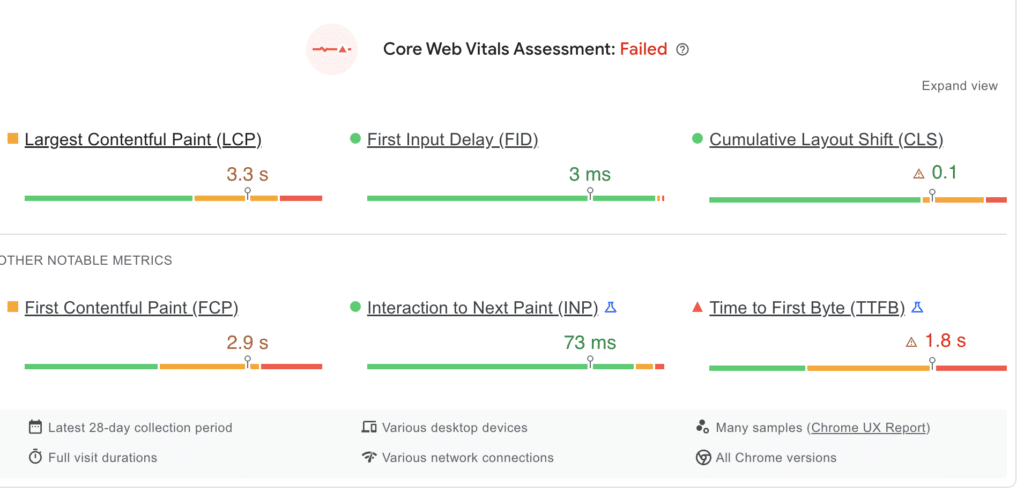
Field Vs. Lab Data:
- Field Data: Historical performance data from real users. Tools like Google Analytics offer insights into actual user experience.
- Lab Data: Simulated results from controlled tests. Tools like Google Lighthouse provide lab data under set conditions, useful for diagnosing specific issues.
Best Tools to Test Website Speed
1. Google PageSpeed Insights
Google PageSpeed Insights is a free tool designed to diagnose specific opportunities where page speed is lacking.
- Features: Provides diagnostic suggestions for improving page speed, including Core Web Vitals metrics and actionable recommendations.
- Data: Uses Lighthouse for lab data to estimate performance on standard devices with good network conditions. Check screenshot below
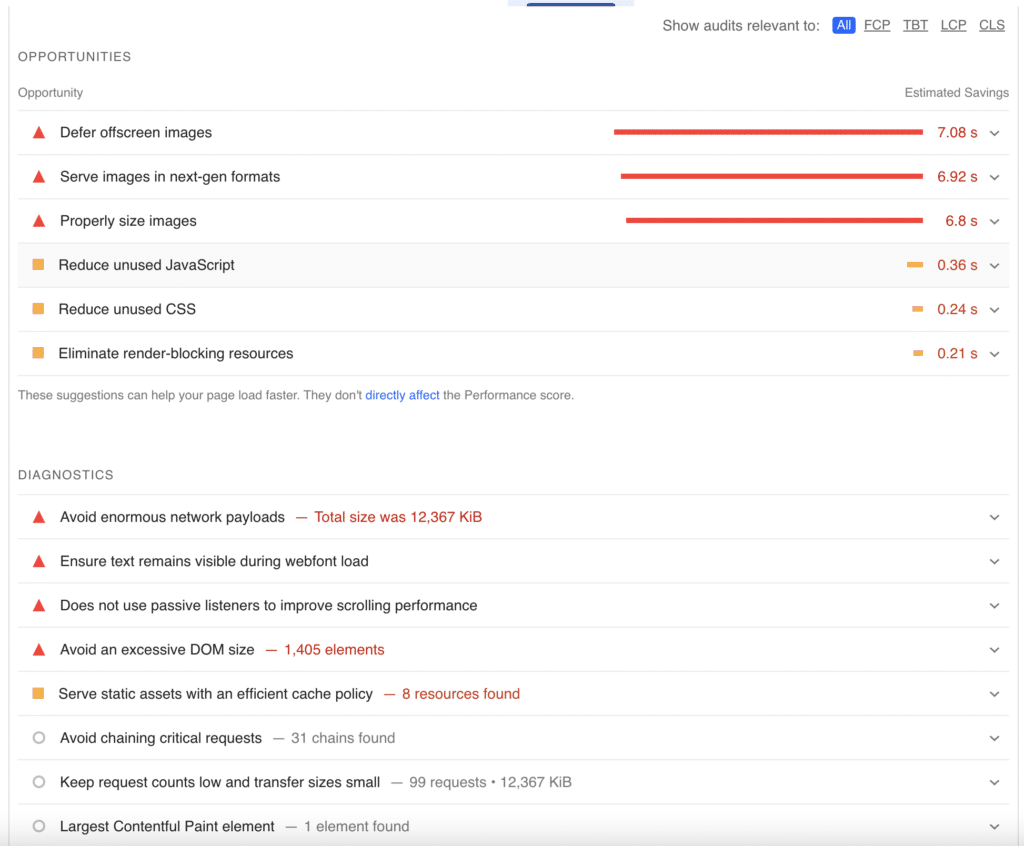
2. GTMetrix
GTMetrix is an excellent audit tool for website page speeds that provides similar lab data as Google’s Lighthouse with even better visualization tools.
- Features: Offers detailed visualizations and metrics similar to Google Lighthouse. Includes a waterfall tab to analyze how individual elements affect load times.
- Benefits: Excellent for understanding how specific components influence page speed. Check screenshot below
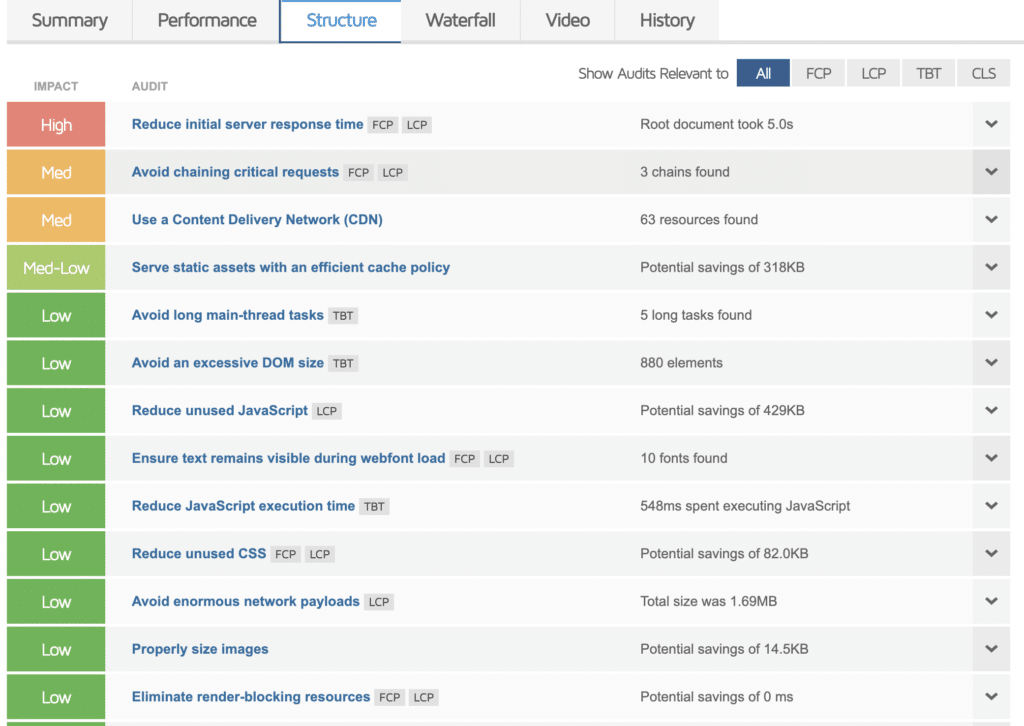
3. Pingdom
Pingdom is a paid tool, which is well worth the money if you need real-time page speed monitoring via its Real User Monitoring setting.
- Features: Provides real-time page speed monitoring and detailed insights. Offers both simulated and real-time field data.
- Benefits: Useful for ongoing performance tracking and analysis across various devices and networks. Check screenshot below

4. WebPageTest
From my standpoint, WebPageTest is the best free speed test tool you’ve ever heard of.
- Features: A powerful free tool offering lab data, real-time page load views, and detailed performance metrics. Includes features like filmstrip views and multiple test runs.
- Benefits: Ideal for visualizing how a page loads and identifying performance bottlenecks. Check screenshot below
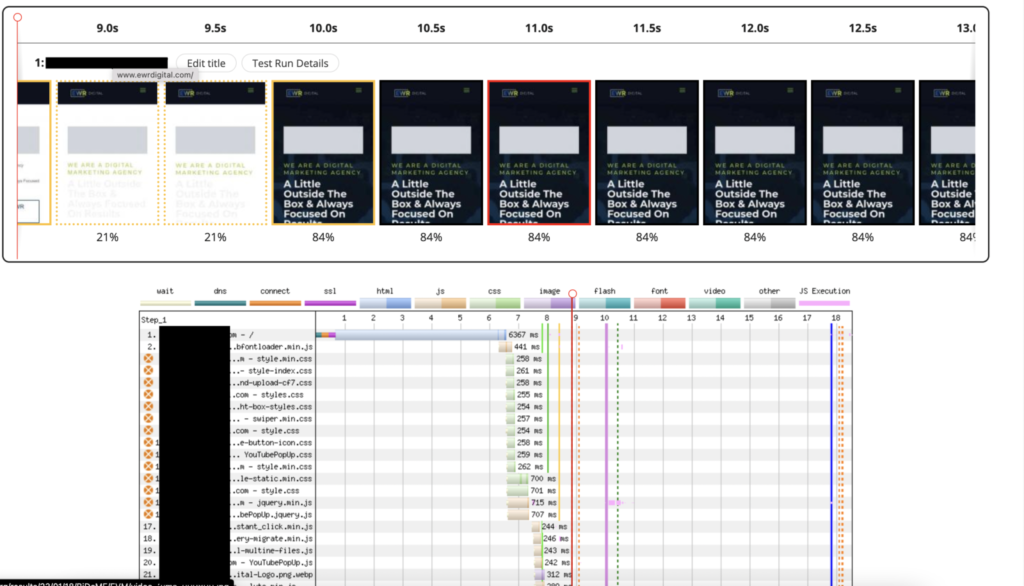
5. Google Search Console
I highly recommend you access the Speed Report in Google Search Console for a more granular look at individual page speeds.
- Features: Offers a Speed Report that provides granular insights into individual page speeds and overall performance.
- Benefits: Useful for tracking performance changes and understanding how different pages perform.
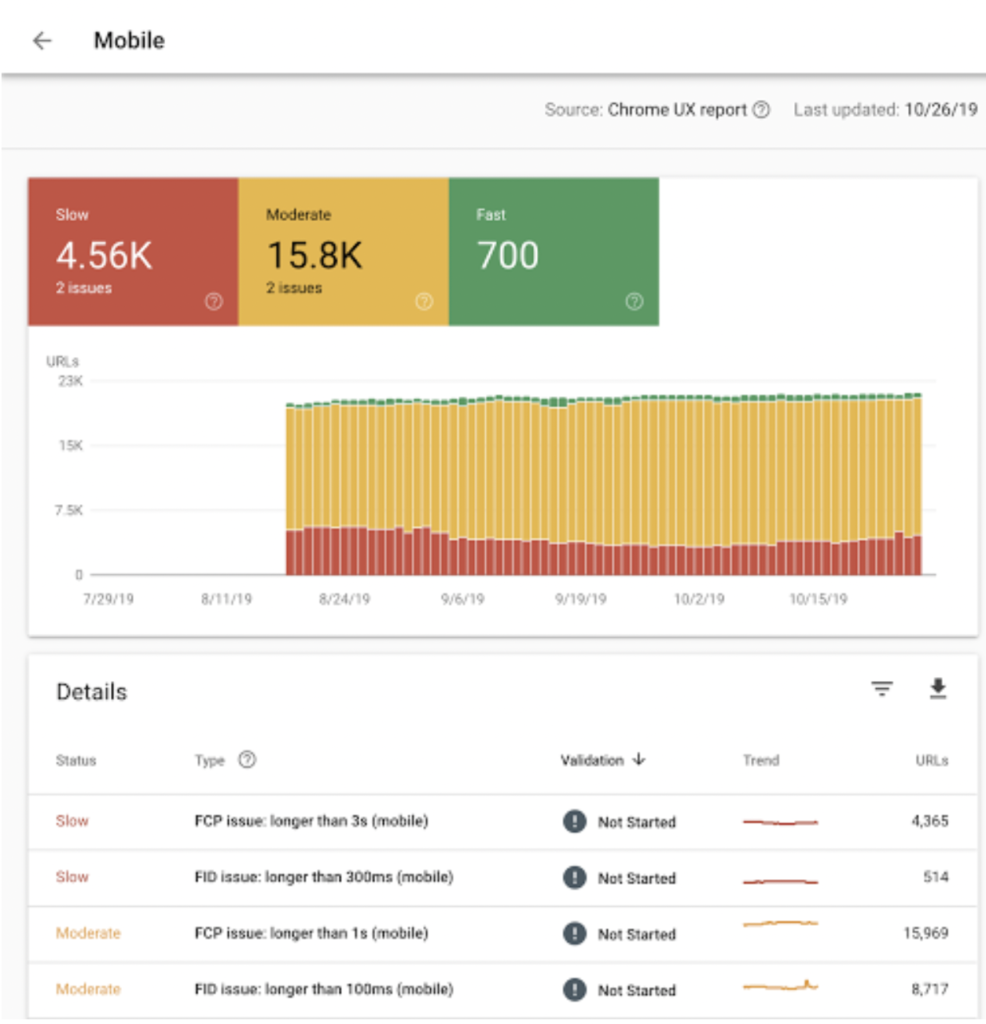
6. New Relic
New Relic offers sophisticated tools to monitor page speeds over time, debug your code, and even clean up your plugins to channel faster site speed.
- Features: Provides advanced monitoring tools, debugging capabilities, and performance optimization features. Requires a subscription.
- Benefits: Great for detailed performance analysis and real-time alerts on page speed issues.
Tips to Improve Website Speed
1. Enable Compression
- Benefits: Reduces the size of files and images, leading to faster load times. Use plugins like Optimole or WP Rocket that includes the Imagify plugin.
2. Caching
- Benefits: Improves performance for repeat visitors by storing small pieces of data on client devices. Use caching plugins to speed up page loading times. Plugins like WP Rocket and WP Super Cache allow for caching and can significantly improve your user experience.
3. Lazy Loading
- Benefits: Delays the loading of images and other resources until they are needed, reducing initial load times. Available through plugins like WP Rocket or LazyLoad.
4. Optimize Server Location/CDN
- Benefits: Hosting on geographically closer servers or using a CDN can significantly reduce latency and improve load speeds for a global audience.
5. Minify Resources
- Benefits: Reduces the size of CSS and JavaScript files by eliminating unnecessary code and spaces. This decreases the number of requests and improves load times.
6. Reduce Plugins and Unnecessary Code
- Benefits: Eliminates excess backend plugins and redundant code to streamline website operations and reduce resource load. Regularly review and clean up plugins to maintain efficiency.
By following these guidelines and leveraging the recommended tools, you can effectively test and optimize your website’s speed, leading to improved user experience, better SEO performance, and enhanced overall site functionality.
More Resources:
